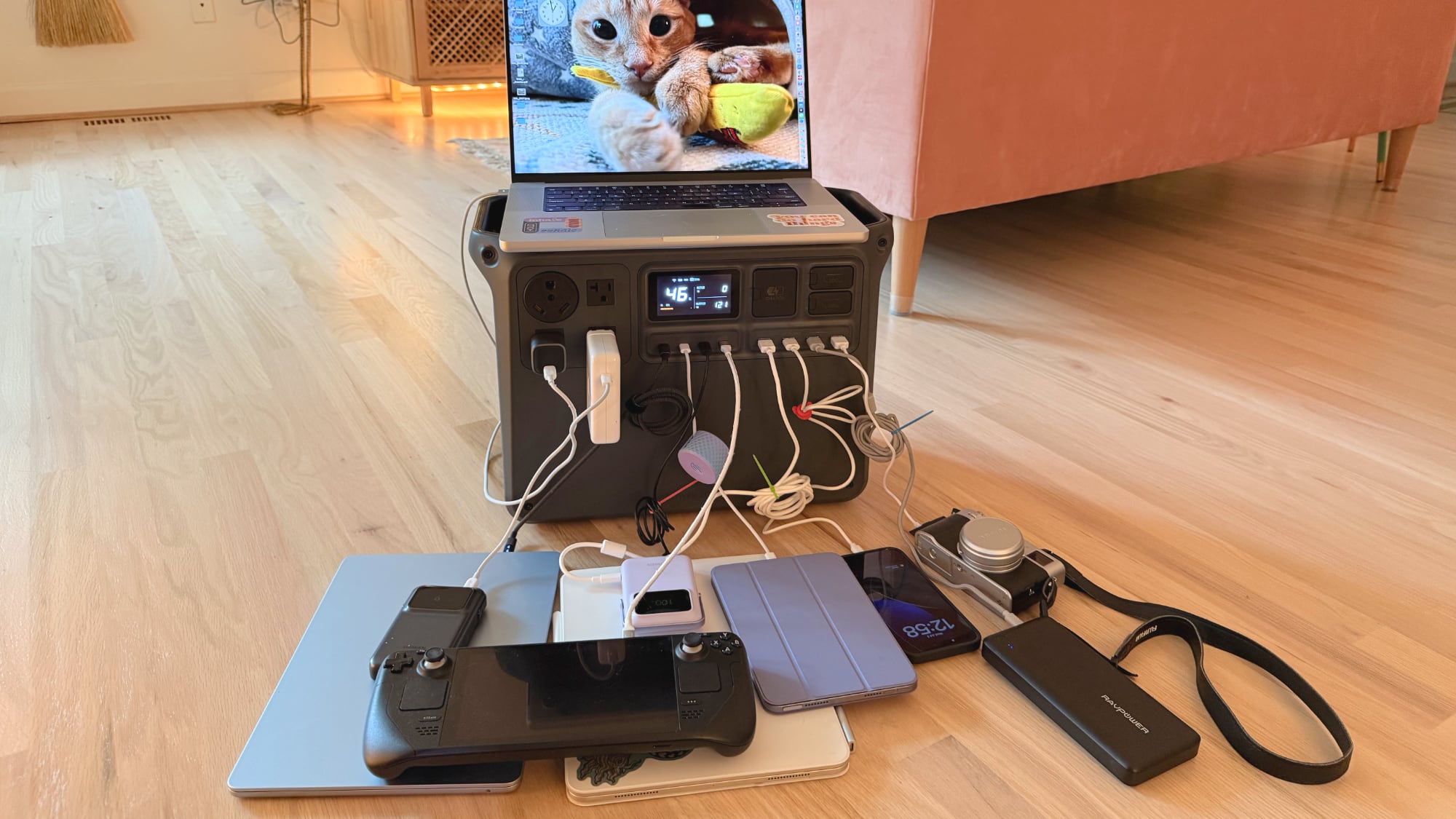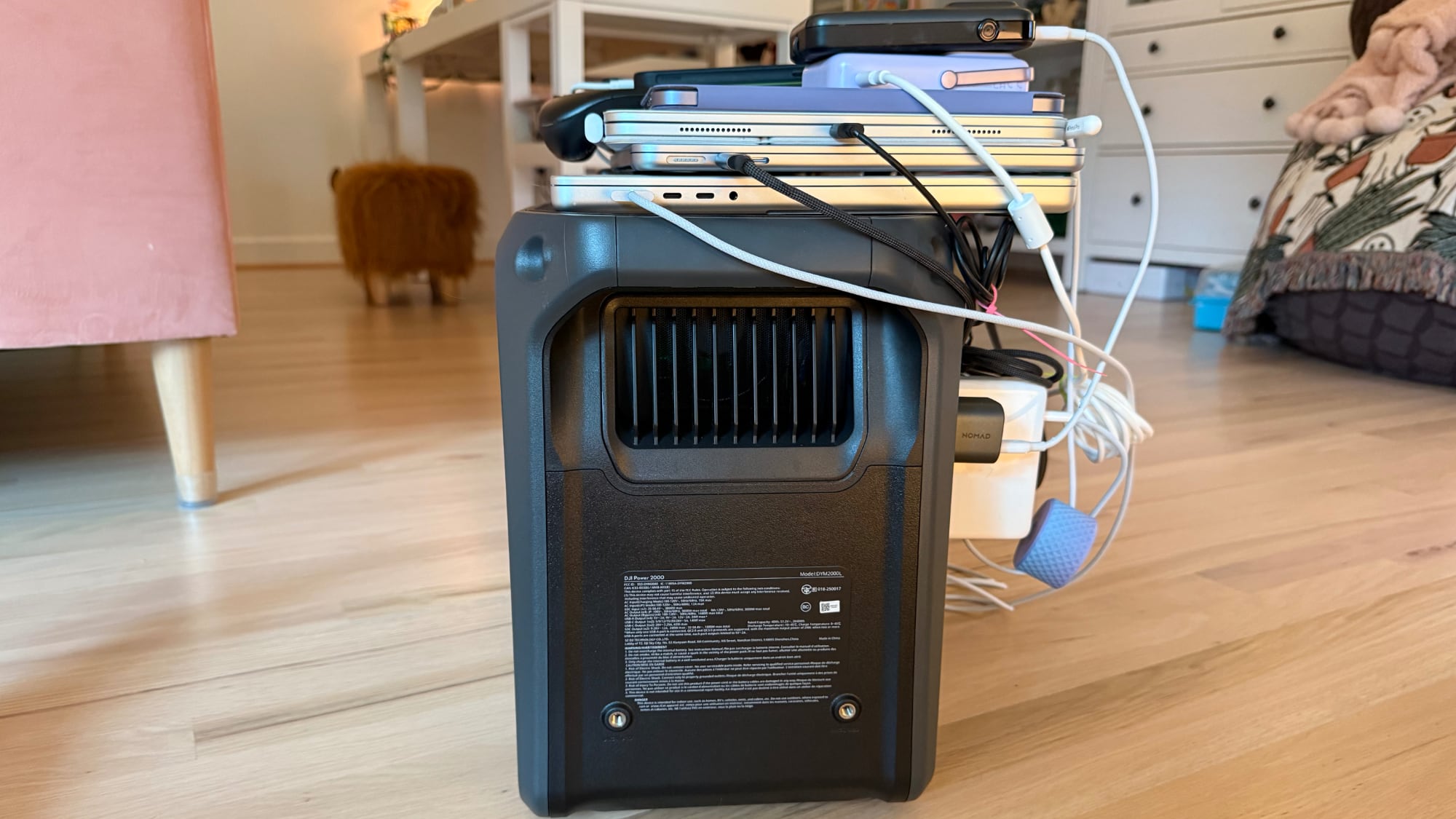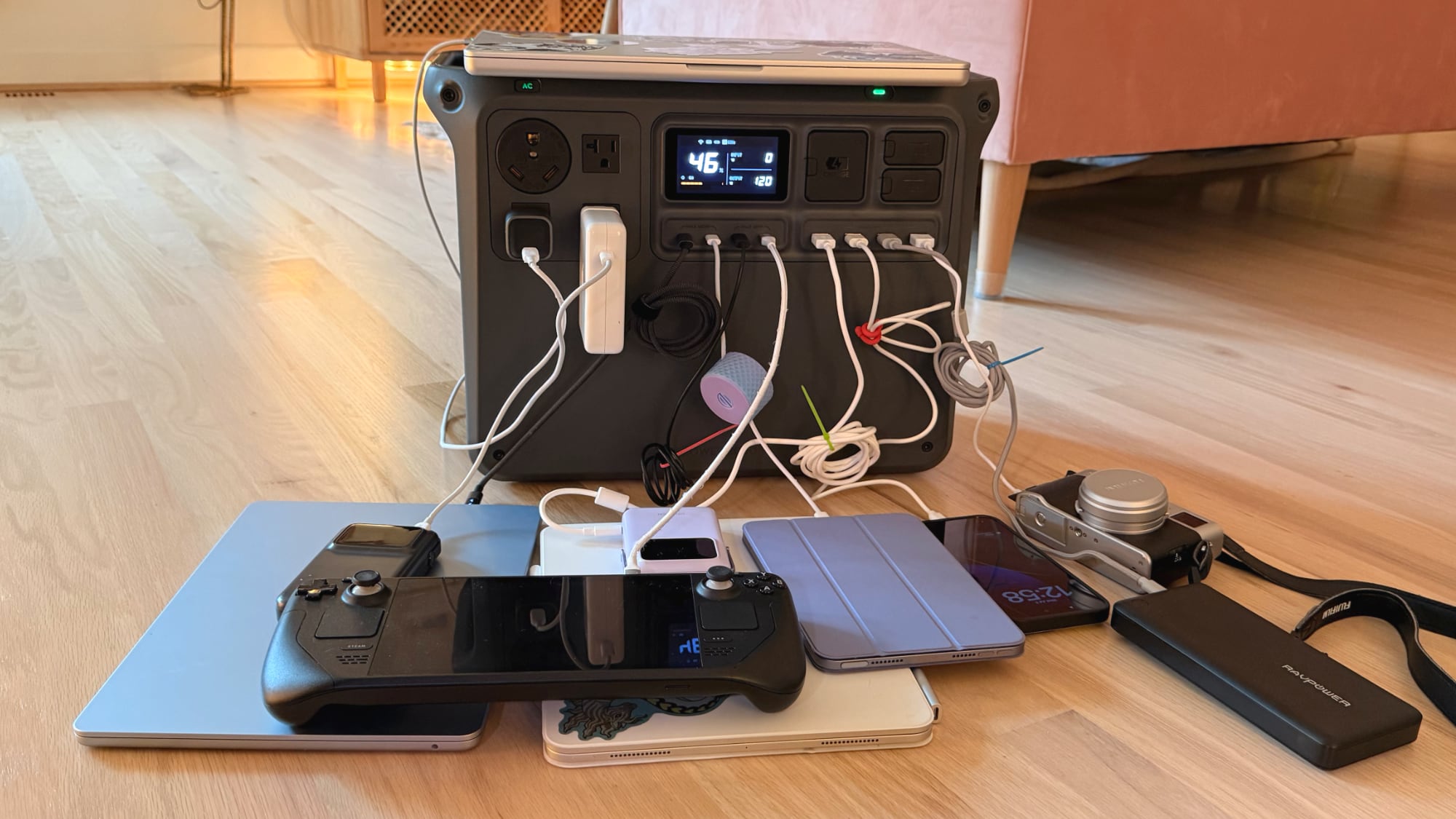
DJI, best known for its line of drones, today announced the launch of the Power 2000, a portable power station. DJI already offers the Power 1000, and the Power 2000 is a larger, more capable version of the Power 1000.

I was able to test the Power 2000 before launch, to provide insight into the product for those who might be looking for a large power station option.
DJI's Power 2000 has a 2048Wh capacity with an LFP battery, double the capacity of the Power 1000. It's designed to power multiple devices or large appliances and equipment in emergencies, when off-grid, or when no traditional power source is available such as in a van living situation. It's $1,299, so it's not cheap, but it does seem to be priced competitively.
DJI describes the Power 2000 as compact, and it is compared to some competing products with similar capacities, but it stretches the definition of portable. The Power 2000 weighs approximately 50 pounds, so while it is a device that works well at home as a backup, in a vehicle, or in an off-grid situation where you have the ability to transport it, it's not something that's ideal for carrying around.

Most people aren't going to want to lug a 50-pound device out for a day at the park or the beach, and it's not going to work for camping when a vehicle isn't available, such as in a hike-in situation. There are other, smaller power banks that are better for that purpose, but the Power 2000 is ideal as a home backup unit or for vehicle living situations. If you need even more power, the Power 2000 does support up to 10 Power Expansion Battery units (each 2048Wh) for a total capacity of 22,528Wh.
DJI included two carrying handles on either side of the Power 2000, but it could have done better. Anker's power banks of this size come with a set of wheels and an extendable handle so you can more easily transport them, and including something similar would have made the Power 2000 much easier to move from place to place. Even bringing it to different rooms and moving it outside to test charging was a chore during the review due to the weight, though size is a different story. It's heavy, but it is smaller than I would have expected. It measures in at 17.5 inches by 13 inches by 9 inches.
All of the ports are at the front of the Power 2000 for easy access. There are four AC ports that accommodate standard plugs, four USB-C ports, four USB-A ports, two bidirectional "smart" DC ports, and two 1/4" threaded ports for DJI accessories, solar panels, and other devices. All of the ports can be used at once, for charging multiple devices at the same time. Two of the USB-C ports support 140W and were able to charge my MacBook Pro at full speed with the USB-C to MagSafe cable, while the other two ports support 65W.

There's a power button that activates the Power 2000 when you hold it down for two seconds, and a separate AC button that turns on the AC ports. A display at the front tells you what's drawing power and how long the battery will last, or how much power the device is drawing from an outlet and the time to recharge.
The Power 2000 can handle a total of 3,000 watts, so it is powerful enough to run most appliances and devices in the home. It can handle refrigerators (even full-sized), heaters, microwaves, portable AC units, medical devices, and power tools. While it's useful to have a device like the Power 2000 on hand for power outages, I find the large batteries useful in situations where I need to use a tool in a spot where there's no outlet.
I can put the Power 2000 in my Gorilla Cart and plug in whatever I need. I've done this when sanding, using a pressure washer, using a heat gun, powering a shop vac, and more. My brother keeps a similar large power bank in his car for emergencies, and I've also used one for backup power. If you've ever had a multi-hour or multi-day power outage because of a weather event, you're aware of the utility of a large power bank or backup generator.

The Power 2000 has enough capacity to power my router and my cable modem for longer than an 8-hour workday, so if the electricity is out, I can still get online with AT&T fiber. I plugged in my PlayStation 5, 65-inch TV, Apple TV, and some lights. Power draw was 400W, give or take, and it was able to run everything for over four hours.
Charging my MacBook Air dropped the Power 2000's battery from 100 percent to 95 percent, and it dropped a percent charging my iPhone 16 Pro Max from zero to 80 percent. I can't test how many times I can charge my MacBook or iPhone because it would take forever, but based on the test charges, it should handle charging a MacBook Air around 20 times and an iPhone 16 over 100 times. It can also charge my camera battery over 100 times, and of course it can charge DJI drones.

I don't have medical equipment, but these kinds of batteries can be useful for CPAP machines, oxygen concentrators, and other devices that need power even when there's an outage. The Power 2000 has an option for an uninterruptible power supply mode. It can be plugged into a wall outlet, a device can be plugged into the Power 2000, and then if the power goes out, the device will remain on with no interruption. It also offers passthrough charging, so you can use it as a charging station that expands the number of devices that can run from a single outlet.
DJI suggests that the Power 2000 can run a router for 152 hours, a projector for 80 hours, a car refrigerator for 38 hours, an electric fan for 18 hours, and a lamp for 180 hours. A DJI drone should be able to charge 24 times.
I drained and charged the Power 2000 several times over the testing period. I haven't had it long enough to determine how long it holds a charge, but in my experience, these kinds of batteries will stay charged for months. You usually have to use them every three to six months for optimal health, and you won't want to store it with a full charge. The Power 2000 uses a lithium iron phosphate battery that DJI says will retain 80 percent capacity after 4,000 cycles, and that it is able to maintain power for months due to its power management features.

DJI's app works with the... Click here to read rest of article
Article Link: DJI Launches 'Power 2000' Portable Power Station

